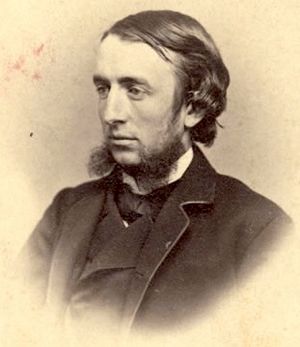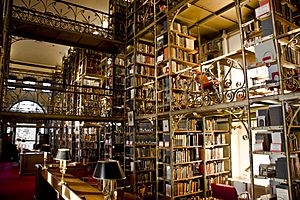Andrew Dickson White facts for kids
Quick facts for kids
Andrew Dickson White
|
|
|---|---|
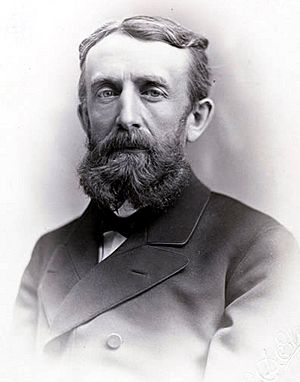
White in 1885
|
|
| 1st President of Cornell University | |
| In office 1866–1885 |
|
| Succeeded by | Charles Kendall Adams |
| 16th United States Ambassador to Germany | |
| In office June 19, 1879 – August 15, 1881 |
|
| Preceded by | Bayard Taylor |
| Succeeded by | Aaron Augustus Sargent |
| 1st President of the American Historical Association | |
| In office 1884–1885 |
|
| Preceded by | None |
| Succeeded by | George Bancroft |
| 41st United States Ambassador to Russia | |
| In office July 22, 1892 – October 1, 1894 |
|
| Preceded by | Charles Emory Smith |
| Succeeded by | Clifton R. Breckinridge |
| 24th United States Ambassador to Germany | |
| In office June 12, 1897 – November 27, 1902 |
|
| Preceded by | Edwin F. Uhl |
| Succeeded by | Charlemagne Tower Jr. |
| Member of the New York Senate from the 22nd district |
|
| In office 1864–1867 |
|
| Preceded by | Allen Munroe |
| Succeeded by | George N. Kennedy |
| Personal details | |
| Born | November 7, 1832 Homer, New York, U.S. |
| Died | November 4, 1918 (aged 85) Andrew Dickson White House, Ithaca, New York, U.S. |
| Resting place | Sage Chapel, Cornell University, Ithaca, New York, U.S. 42°26′50″N 76°29′05″W / 42.447307°N 76.484592°W |
| Nationality | American |
| Political party | Republican |
| Height | 5 ft, 5 in |
| Spouses |
Mary A. Outwater
(m. 1859; died 1887)Helen Magill
(m. 1890–1918) |
| Residence | Andrew Dickson White House |
| Alma mater | Yale College (A.B. in 1853 and M.A in 1856) |
| Signature | |
| Scientific career | |
| Institutions | |
| Notable students | David Starr Jordan |
Andrew Dickson White (born November 7, 1832 – died November 4, 1918) was an American historian and educator. He is best known for helping to create Cornell University. He also served as its first president for almost 20 years.
White worked to make college classes cover more subjects. He was also a politician, serving as a state senator in New York. Later, he became an American diplomat (a person who represents their country) to Germany and Russia.
He also helped develop the idea called the "conflict thesis." This idea suggests that science and religion have often been in conflict throughout history. He wrote a long book about this topic.
Contents
Andrew Dickson White's Early Life and School
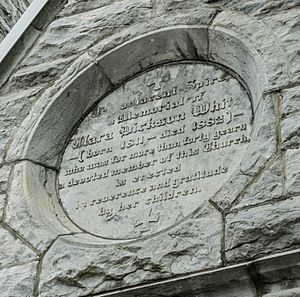
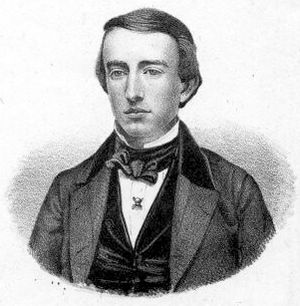
Andrew Dickson White was born on November 7, 1832, in Homer, New York. His parents were Clara and Horace White. His father, Horace, became a rich businessman even though his family had faced hard times. In 1839, Horace opened a bank in Syracuse.
Andrew and his brother were baptized at a church in Homer. One of Andrew's cousins, Edwin White, became a famous artist. His nephew, Horace White, later became the governor of New York.
College Days
In 1849, White started college at Geneva College, which is now called Hobart and William Smith Colleges. He felt that this small school was not the right fit for him. In 1850, he left Geneva College.
After some discussion with his father, White transferred to Yale College. At Yale, he became good friends with Daniel Coit Gilman. Gilman later became the first president of Johns Hopkins University. They were both part of a secret society called Skull and Bones. They even traveled together in Europe after they graduated.
White was very active at Yale. He joined several clubs and societies. He was an editor for the fraternity's newspaper, The Tomahawk. He also edited the Yale Literary Magazine. White won several awards for his writing and public speaking. He even competed on the Yale crew team.
Studying in Europe
After graduating from Yale in 1853, White traveled and studied in Europe. He went to famous universities in Paris and Berlin. He also worked as a translator for the U.S. Ambassador to Russia.
When he returned to the United States, White continued his studies at Yale. He earned a Master of Arts degree in History in 1856.
Andrew Dickson White's Career
Working in Academia
In 1858, White became a professor of History and English literature at the University of Michigan. He taught there until 1863. He helped improve the university grounds by having students plant trees.
From 1862 to 1863, he went to Europe. He tried to convince France and Britain to support the United States during the American Civil War. He wanted them to avoid helping the Confederate States.
Creating Cornell University
In 1863, White returned to Syracuse. He was elected to the New York State Senate. There, he met another senator, Ezra Cornell. Ezra Cornell was a farmer who had become wealthy in the telegraph business.
Senators were deciding how to use money from a new law called the Morrill Land-Grant Colleges Act. This law gave land to states to help fund colleges. White strongly believed the money should go to one strong university, not many small ones. Ezra Cornell agreed. He offered to donate a large sum of his own money to create a new university.
White suggested that the university be named after Ezra Cornell. On February 7, 1865, White introduced a bill to create "the Cornell University." The bill was signed into law on April 27, 1865. This officially created Cornell University as New York's land-grant institution.
White became the first president of Cornell University. He also taught history there. He hired William Henry Miller, one of Cornell's first architecture students, to design his home on campus.
In 1891, White was asked to be the first president of Stanford University. He turned down the offer but suggested his former student, David Starr Jordan, for the role.
The Conflict Thesis Idea
When Cornell University was founded, White wanted it to be a place for Science. He believed that truth should be sought for its own sake, not just to fit religious beliefs. At that time, many American universities were religious schools.
In 1869, White gave a speech called "The Battle-Fields of Science." He argued that history showed problems when religion tried to stop scientific progress. Over the next 30 years, he studied this idea more deeply.
He wrote a two-volume book called A History of the Warfare of Science with Theology in Christendom (1896). In this book, he presented his "conflict thesis." This idea claimed that science and strict religious beliefs were often at war. While his book was very important in the 19th century, most modern historians of science do not fully agree with the "conflict thesis" today.
Working as a Diplomat

While he was president of Cornell, White also served as a Commissioner to Santo Domingo in 1871. President Ulysses Grant asked him to see if the United States could take over the Dominican Republic. Their report supported the idea, but it did not happen.
Later, White became the American ambassador to Germany (1879–1881). After returning home, he was chosen as the first president of the American Historical Association (1884–1886).
After he stopped being Cornell's president in 1885, White continued his diplomatic work. He served as the minister to Russia (1892–1894). He was also president of the American group at The Hague Peace Conference in 1899. He then served again as ambassador to Germany (1897–1902).
In 1904, White published his Autobiography. He wrote it while relaxing in Italy after retiring.
His Love for Books
Throughout his life, White collected many books. He had a very large collection about architecture, which was the biggest in the United States at the time. He gave all 4,000 of these books to the Cornell University Library. He also donated the rest of his 30,000-book collection to the library.
In 1879, White asked George Lincoln Burr to manage his rare book collection. Burr traveled around Europe to find and collect books that White wanted. He built important collections on the Reformation, witchcraft, and the French Revolution.
Today, White's collection is kept at the Cornell Archives. Many books are also in the Andrew Dickson White Reading Room at Uris Library. This reading room was designed by William Henry Miller, who also designed White's home.
While in Russia, White met the famous author Leo Tolstoy. Tolstoy was interested in Mormonism, which made White curious too. White had thought of the Latter-Day Saints (LDS) as a dangerous group before. When he returned to the U.S., he collected many items related to Mormonism. His collection is one of the best outside of the church itself.
Andrew Dickson White's Personal Life
White was married two times. His first marriage was to Mary Amanda Outwater in 1857. They had three children: Frederick Davies White, Clara (White) Newbury, and Ruth (White) Ferry. Mary died in 1887.
In 1890, White married Helen Magill. Helen was the first woman in the United States to earn a Ph.D. She was also a social scientist and educator. They met at a conference. Together, Helen and Andrew had three children: Edward Magill White, Hilda White, and Karin Andreevna White.
Death and What He Left Behind

Andrew Dickson White passed away on November 4, 1918, at his home in Ithaca. Three days later, on what would have been his 86th birthday, he was buried at Sage Chapel on the Cornell campus. The chapel was full of people who wanted to honor him.
White's body rests in a special stone coffin called a sarcophagus in the Memorial Room. Other important people from Cornell's early days, like co-founder Ezra Cornell, are also buried there. White's sarcophagus was designed in the Art Nouveau style. It shows symbols from countries where he was an ambassador and universities where he studied.
The sculptor Lee Oskar Lawrie finished the sarcophagus in 1926. Lawrie also created the famous Atlas statue in New York City.
In his will, White left $500,000 to Cornell University. He had already given a lot of money to Cornell during his life.
His Impact on Cornell University
In his 1904 autobiography, Andrew Dickson White wrote about his life's work:
Most of all, I have been interested in the founding and maintaining of Cornell University, and by the part, I have taken in that, more than by any other work of my life I hope to be judged.
For many years, Cornell students named 'White' were often called 'Andy' in honor of Andrew Dickson White. A famous example is E. B. White, the author of Charlotte's Web, who was known as 'Andy' after his time at Cornell.
Honors and Awards
White received many honorary degrees from different universities, including:
- University of Michigan, Doctor of Law (1867)
- Cornell University, Doctor of Law (1886)
- Yale University, Doctor of Law (1887)
- Columbia University, Doctor of Humane Letters (1887)
- University of Jena, Doctor of Philosophy (1889)
- St. Andrew's University, Doctor of Law (1902)
- Johns Hopkins University, Doctor of Law (1902)
- University of Oxford, Doctor of Civil Law (1902)
- Dartmouth College, Doctor of Law (1906)
Gallery
-
1915 - Featured in The New York Times
-
The statue of White on the Cornell Arts Quad by Karl Bitter
See also
 In Spanish: Andrew Dickson White para niños
In Spanish: Andrew Dickson White para niños
- Andrew Dickson White House


